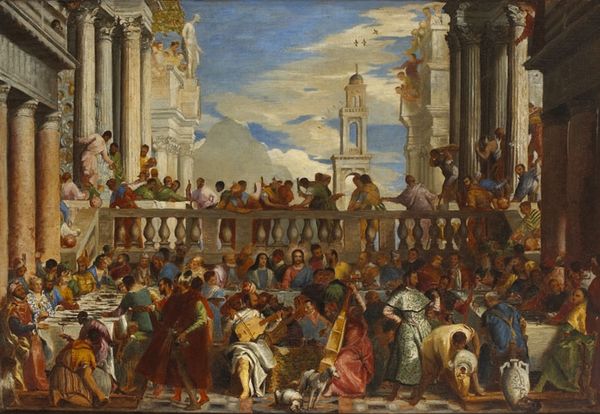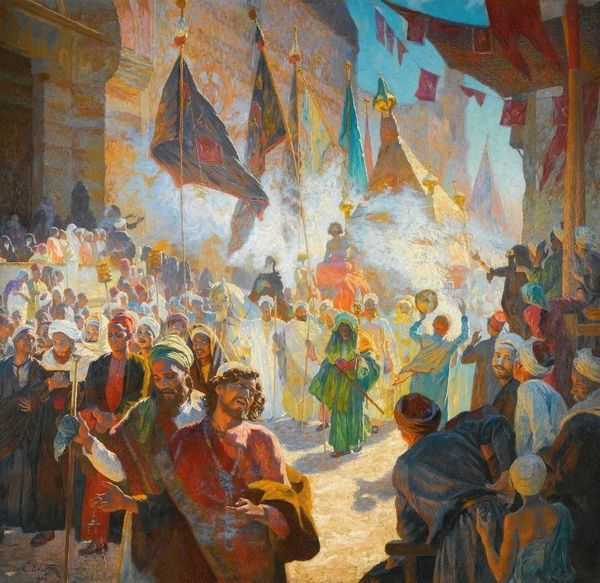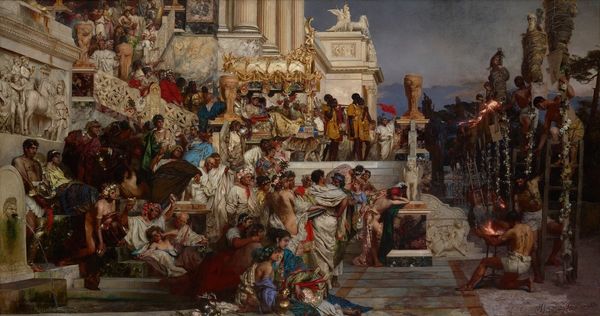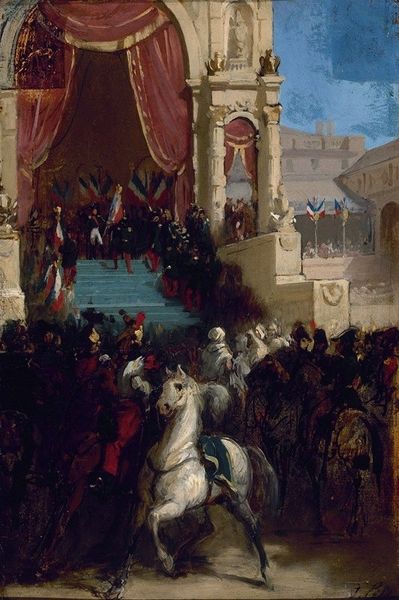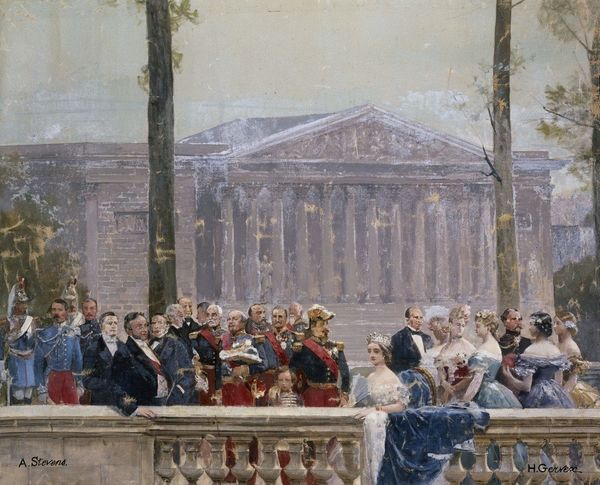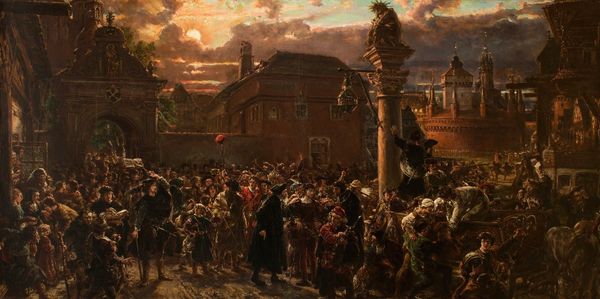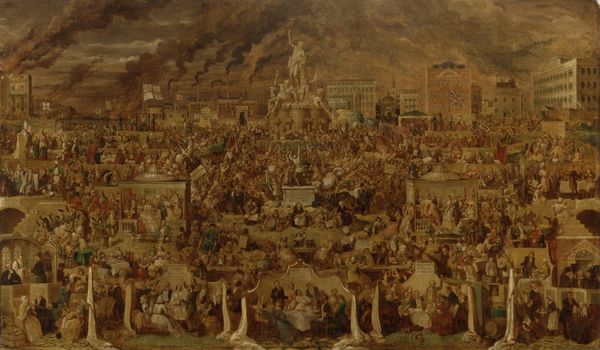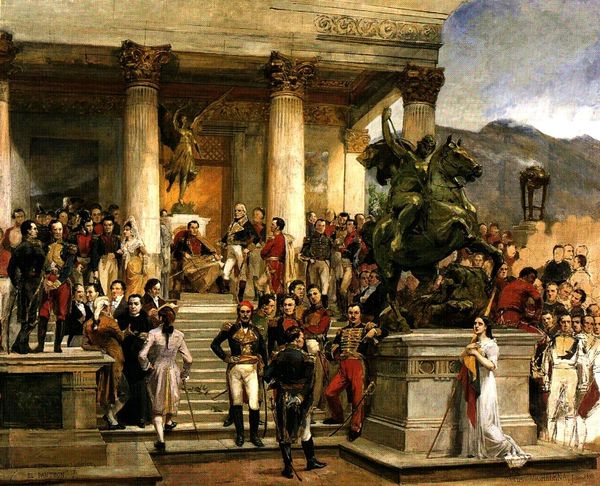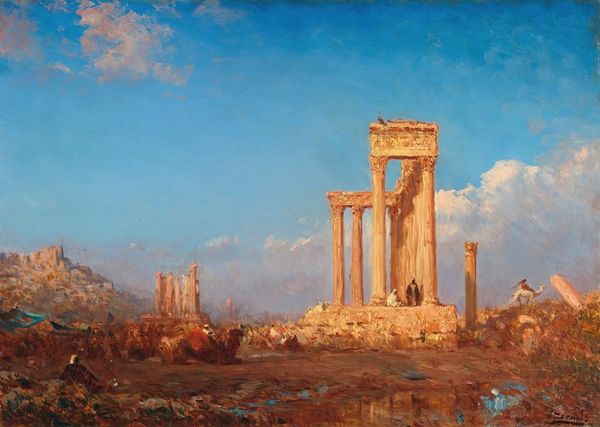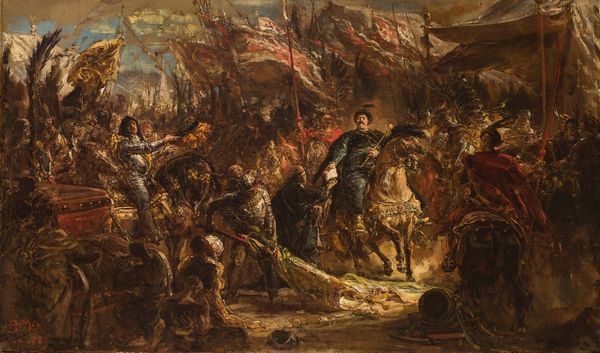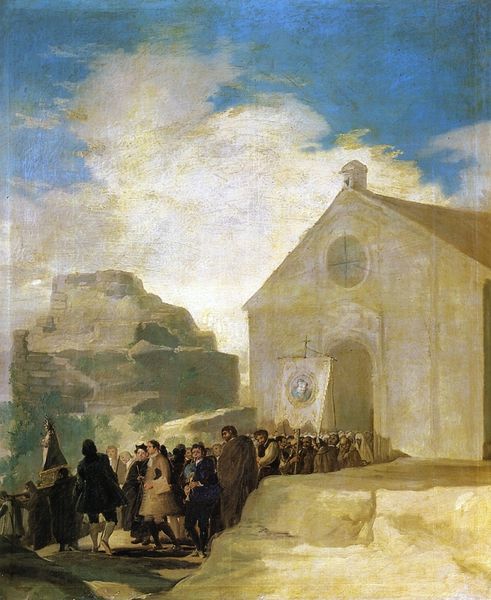
Study for The Apotheosis of Pennsylvania, House of Representatives Chamber, Pennsylvania State Capitol, Harrisburg c. 1902s
0:00
0:00
oil-paint, mural
#
figurative
#
neoclassicism
#
oil-paint
#
figuration
#
oil painting
#
history-painting
#
academic-art
#
mural
Copyright: Public Domain: Artvee
Curator: Here we have Edwin Austin Abbey's "Study for The Apotheosis of Pennsylvania," conceived around the early 1900s. It’s an oil-on-canvas preliminary work for a mural in the Pennsylvania State Capitol. Editor: My first thought? It's like looking into a swirling historical vortex, a dramatic dreamscape filled with people! All those figures rising toward something…monumental. Curator: Indeed! The mural’s intended location within the House of Representatives emphasizes the theme of civic apotheosis – the raising of Pennsylvania to a divine status. This piece engages with narratives of progress, power, and state identity prevalent in early 20th-century America. Editor: The sheer scale must be impactful. Even in this preparatory painting, I get a sense of soaring ambition. And the brushwork, loose and suggestive, leaves room for the imagination. Do you feel it tries to portray an actual historical event? Curator: It's more allegorical than strictly historical. The arrangement evokes classical Roman apotheosis scenes. The figures likely represent various contributors to Pennsylvania's history and prosperity. The placement of the central sculpture suggests classical virtues of the state. Considering the political climate of that time, it romanticizes American enterprise, yet is inevitably intertwined with ideologies of the colonialist expansion and industrial labor issues of the state. Editor: I wonder, did the full mural retain this sense of… almost feverish energy? There’s something very dynamic about the upward thrust, like the entire scene is aspiring towards that statue. Curator: It retains much of the preliminary study's energy, solidifying the themes of idealized American virtues within a firmly structured Neoclassical form. The mural would also speak to the cultural aspirations of the time, echoing the City Beautiful movement's ethos, but it should not be considered outside of the historical moment it reflects. Editor: So, a snapshot of a state’s self-image, filtered through the artist's vision and the dreams of a burgeoning nation. It is so much more complex when viewed in today’s sociopolitical landscape. Thanks for pointing out some new viewpoints on it. Curator: Absolutely. Approaching such historical works with a contemporary lens helps us decipher not only what was celebrated then, but also what was perhaps obscured or left unexamined, which gives it all its meaning.
Comments
No comments
Be the first to comment and join the conversation on the ultimate creative platform.
